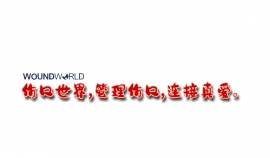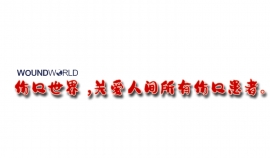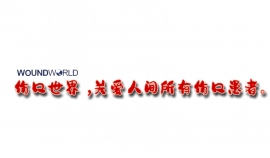文献精选
Louise Morris, Jayne Robbie, Duncan Stang, Catherine Bewsey, Andrew Sharpe, Christian Pankhurst, Krishna Gohil and Michael Edmonds
A crucial barrier to effective diabetic foot care is the delay in accessing specialist care. Delays can take place in three situations:
1. Delay by the person with diabetes in seeking care. A lack of knowledge in the person with diabetes can lead to a lack of urgency in seeking help from a healthcare professional.
2. Delay by healthcare professionals in referring to specialist care. When a person with a foot problem seeks advice, there is sometimes a delay due to failure of a healthcare professional to make a diagnosis
3. Delay in accessing care related to the multidisciplinary diabetic foot team. Referrals from primary and community care to the multidisciplinary foot team are difficult if it meets infrequently or does not exist and that is the situation in some
Hospital Trusts in the UK. Four recommendations to reduce delays are put forward:
1 Formation of a credible multidisciplinary diabetic foot team.
2. Organisation of efficient referral pathways.
3. Establishment an advanced/consultant podiatrist role.
4 Utilisation of the ACT NOW acronym as a triage tool to highlight warning signs leading to amputation.
Citation: Morris L, Robbie J, Stang D et al (2023) Delays in getting to specialist care for people with diabetes and foot problems. What are the delays and how can we reduce them — a Position Statement from the ZAP Amputation group of FDUK. The Diabetic Foot Journal 26(2): 29–38
Key words
- Amputation
- Delays
- Diabetes-related ulcers
- Specialist care
Article points
1. Initial assessment of foot problems in diabetes is carried out in community or primary care. It is, therefore, vital that referral routes for the PwD are robust and well-known to ensure rapid access to the MDFT
2. Delays in accessing specialist MDFT can have catastrophic outcomes for the PwD in terms of tissue loss, amputation and/or early mortality
3. Advanced/consultant podiatrist roles should be developed within each hospital Trust to co-ordinate foot care services for a PwD
4. ACT NOW is a simple, six-stage triage tool to empower the PwD and HCPs to determine if a foot problem requires
Authors
See page 30
Authors
Louise Morris is Principal Podiatrist, Trafford Local Care Organisation Podiatry Department, Trafford General Hospital, Manchester, UK; Jayne Robbie is Senior Podiatrist, University Hospitals Birmingham NHS Trust; Senior Lecturer, Birmingham City University; Duncan Stang is National Diabetes Foot Co-ordinator, Scotland; Catherine Bewsey is Chartered Counselling Psychologist, SWL ICS Foot Network Project, St George’s University Hospitals NHS Foundation Trust; Andrew Sharpe is Advanced Podiatrist, Salford Royal NHS Foundation Trust, UK; Christian Pankhurst is Lead Orthotist, Kings College Hospital, NHS Foundation Trust, London, UK; Krishna Gohil is National Clinical Lead, Lower Limb Wounds National Woundcare Strategy Programme, UK; London, UK; Michael Edmonds is Consultant Diabetologist, Diabetic Foot Clinic, King’s College Hospital, London, UK
David Morris, Probal Moulik
Symptoms of pancreatic cancer often present late, and most are non-specific and thus misinterpreted Although a rare condition, the prognosis for pancreatic cancer is very poor, with a 5-year survival rate of 7.3%; however, this improves to 30% for early-stage diagnosis Prediabetes or diabetes are found in around 80% of people diagnosed with pancreatic carcinoma and, importantly, are often identified a year or two ahead of this diagnosis Thus, new-onset diabetes represents an opportunity for early detection of pancreatic carcinoma. Through this case report of an older gentleman with new-onset diabetes and a normal BMI, the authors discuss how healthcare professionals can identify people who might be at risk of pancreatic cancer, along with the differential diagnoses, and what actions they should take.
Authors
David Morris, Retired GP and Specialist Doctor in Diabetes, Undergraduate Clinical Tutor, Keele University; Probal Moulik, Consultant Endocrinologist, Shrewsbury and Telford Hospitals NHS Trust.
Citation: Morris D, Moulik P (2023) Case report: Pancreatic cancer – assessing diabetes in a thin elderly person. Diabetes & Primary Care 26: [Early view publication]
Habitual calcium supplementation is associated with an increased risk of cardiovascular disease (CVD) amongst people with diabetes but not in those without diabetes, according to this study of UK Biobank data published in Diabetes Care. Over a median follow-up of 8.1 years, 26 374 cardiovascular events were recorded amongst the 435 000 participants studied, and over a median follow-up of 11.2 years there were 20 526 deaths, of which around 4000 were designated as cardiovascular deaths. Amongst those with diabetes, habitual calcium supplementation was significantly associated with higher risks of cardiovascular events (HR 1.34), cardiovascular mortality (HR 1.67) and all-cause mortality (HR 1.44) compared to no calcium supplementation. In contrast, calcium supplementation in those without diabetes was not associated with significantly increased risk of these outcomes. Since habitual calcium supplementation is common in older people keen to reduce the risk of osteoporotic fractures, and since cardiovascular risk is already higher in those with diabetes, any potential increases in risk of CVD or other adverse events associated with calcium supplementation are important.
Pam Brown
GP in Swansea
Citation: Brown P (2024) Diabetes Distilled: Calcium supplementation in people with diabetes – is caution needed? Diabetes & Primary Care 26: [Early view publication]
Habitual calcium supplementation is associated with an increased risk of cardiovascular disease (CVD) amongst people with diabetes but not in those without diabetes, according to this study of UK Biobank data published in Diabetes Care. Over a median follow-up of 8.1 years, 26 374 cardiovascular events were recorded amongst the 435 000 participants studied, and over a median follow-up of 11.2 years there were 20 526 deaths, of which around 4000 were designated as cardiovascular deaths. Amongst those with diabetes, habitual calcium supplementation was significantly associated with higher risks of cardiovascular events (HR 1.34), cardiovascular mortality (HR 1.67) and all-cause mortality (HR 1.44) compared to no calcium supplementation. In contrast, calcium supplementation in those without diabetes was not associated with significantly increased risk of these outcomes. Since habitual calcium supplementation is common in older people keen to reduce the risk of osteoporotic fractures, and since cardiovascular risk is already higher in those with diabetes, any potential increases in risk of CVD or other adverse events associated with calcium supplementation are important.
Pam Brown
GP in Swansea
Citation: Brown P (2024) Diabetes Distilled: Calcium supplementation in people with diabetes – is caution needed? Diabetes & Primary Care 26: [Early view publication]




